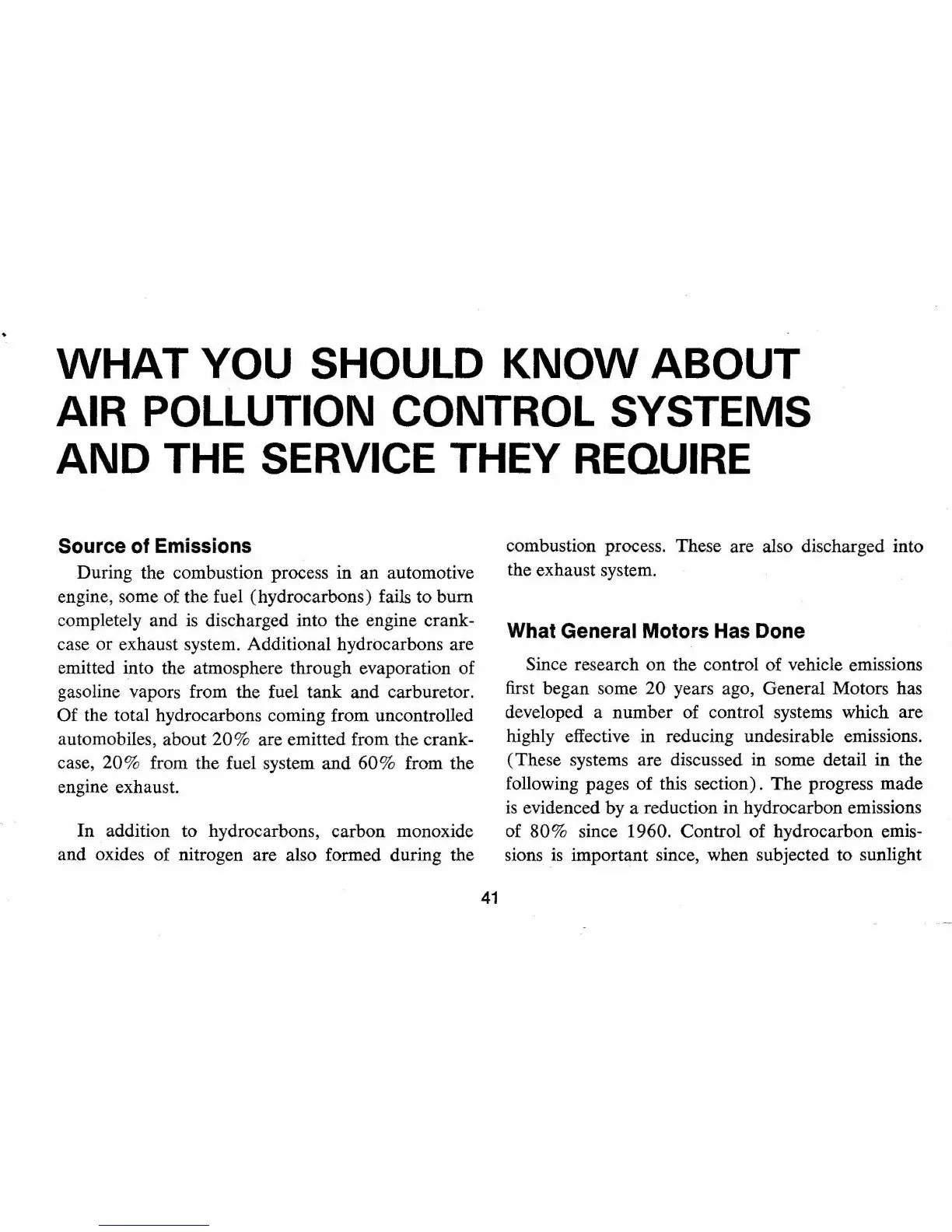WHAT
YOU SHOULD
KNOW
ABOUT
AIR POLLUTION CONTROL SYSTEMS
AND
THE SERVICE THEY REQUIRE
Source of Emissions
During the combustion process in an automotive
engine, some of the fuel (hydrocarbons) fails to
bum
completely and
is
discharged into the engine crank-
case or exhaust system. Additional hydrocarbons are
emitted into the atmosphere through evaporation of
gasoline vapors from the fuel tank and carburetor.
Of the total hydrocarbons coming from uncontrolled
automobiles, about
20
% are emitted from the crank-
case,
20%
from the fuel system and
60%
from the
engine exhaust.
In
addition to hydrocarbons, carbon monoxide
and oxides of nitrogen are also formed during the
41
combustion process. These are also discharged into
the exhaust system.
What General Motors Has Done
Since research on the control of vehicle emissions
first began some
20
years ago, General Motors has
developed a number of control systems which are
highly effective in reducing undesirable emissions.
(These systems are discussed in some detail in the
following pages of this section). The progress made
is
evidenced by a reduction in hydrocarbon emissions
of
80%
since 1960. Control of hydrocarbon emis-
sions
is
important since, when subjected to sunlight

